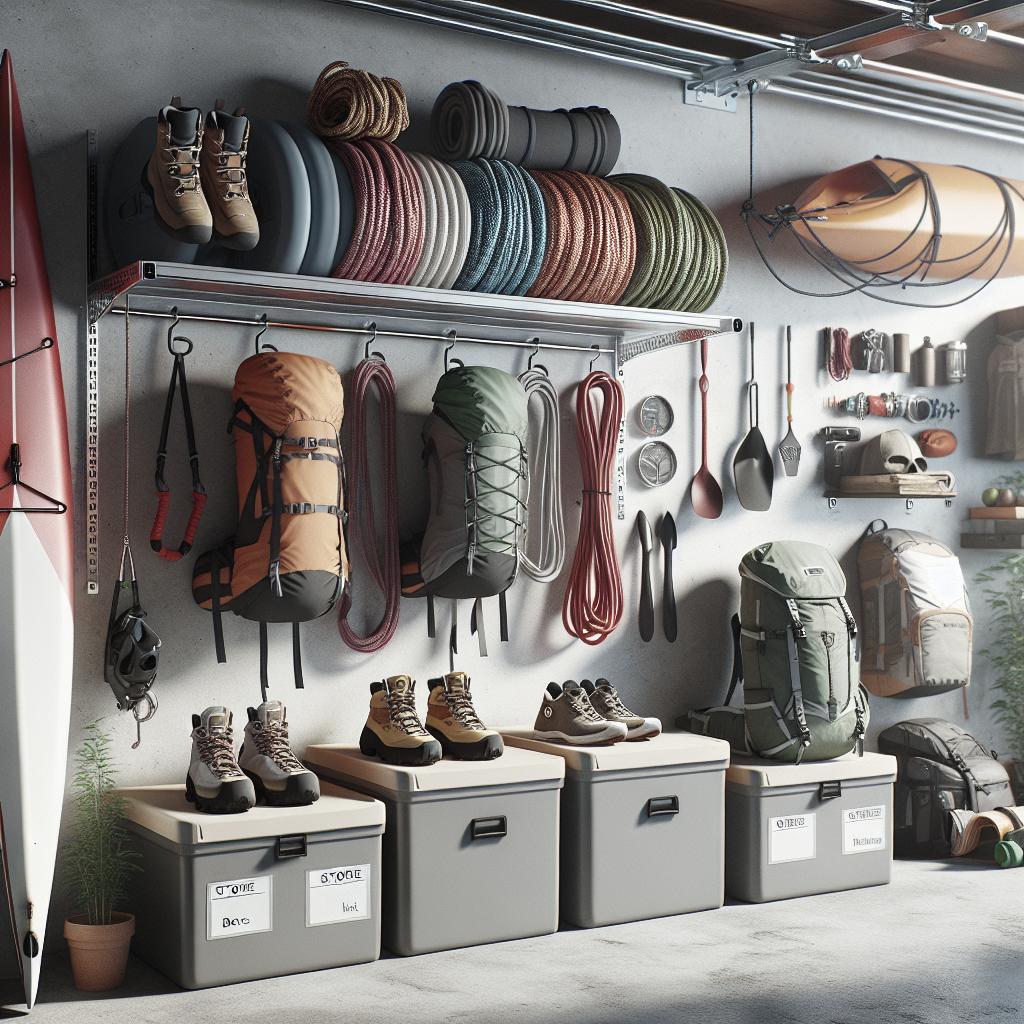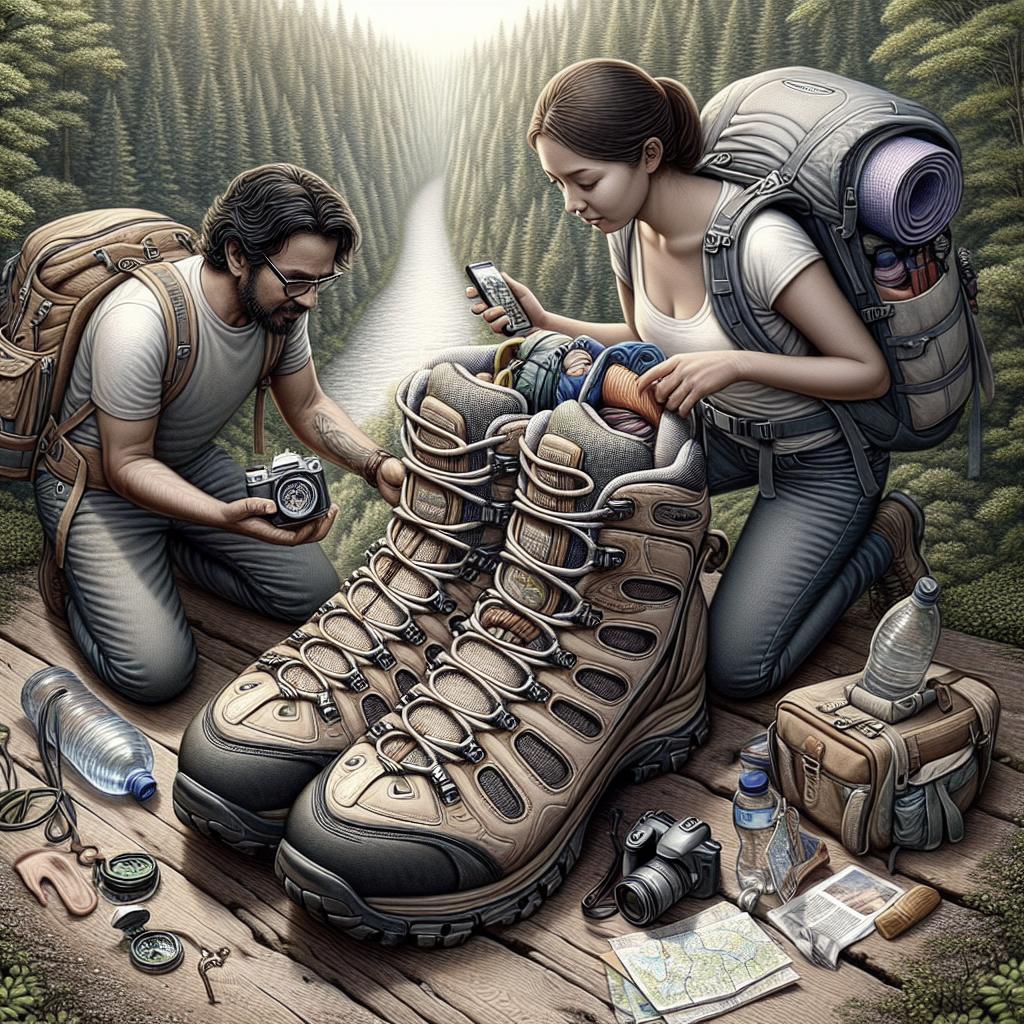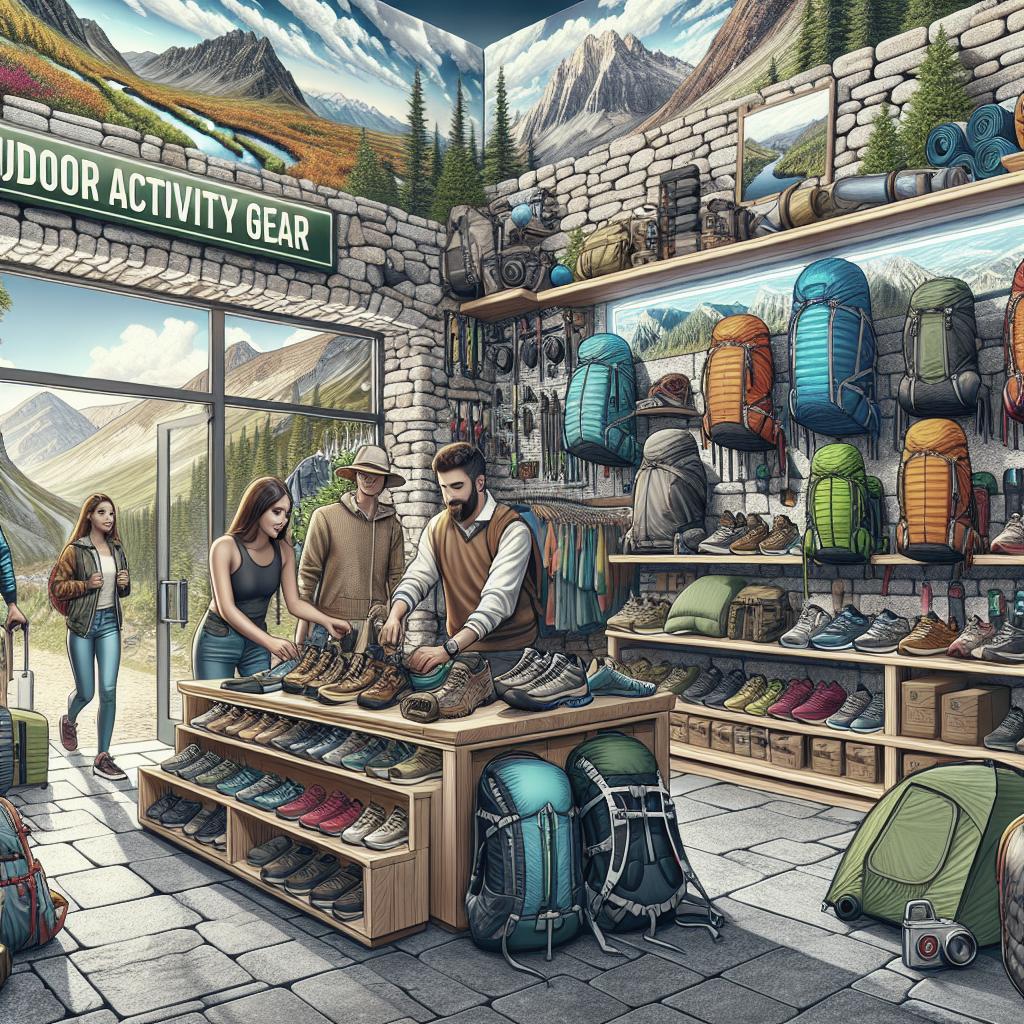<>
When you’re a passionate outdoor enthusiast, your gear is your lifeline. Proper storage not only extends the lifespan of your equipment but also ensures that it’s in perfect condition for your next adventure. From sorting and discarding to cleaning and efficient organization, this guide will help you tackle the task of storing your outdoor gear methodically. We’ll break down the process into six essential steps: first, you’ll sort your equipment, then move on to discarding items you no longer need. After that, you’ll assess the remaining gear, make a storage plan, and clean the items before putting them away. Finally, we’ll discuss the specific requirements for storing various types of gear, including tents, sleeping bags, mats, camp pillows, backpacks, and boots. By following these steps, you’ll keep your gear in top-notch condition, ready for when the trail calls again.
Step 1: Sort
The first step to storing your outdoor gear properly is to conduct a thorough sort. Lay all your equipment out and categorize it by type: tents, sleeping bags, cookware, clothing, hiking boots, and so on. This visual overview helps you understand what you have, making it easier to determine what should stay and what can go. Sorting is not just about organization; it’s also about assessing the condition of each piece. Check for any damage, wear, or missing parts. Grouping similar items together not only makes the next steps easier but also helps you identify redundancy. Do you really need three camping stoves? Or six water bottles?
Step 2: Discard
Once you’ve sorted everything, it’s time to discard the items you no longer need. Look objectively at each piece of gear and assess its usefulness. Items that are broken beyond repair, outdated, or redundant should be discarded or recycled. If you have gear that is still in good condition but you no longer use, consider donating it or giving it to friends or family who can benefit. This step is crucial because it reduces clutter, making it easier to store the gear you do use. By the end of this phase, you should be left with a well-defined collection of essential, functioning items. Remember, less is more, especially when it comes to preserving the condition of your favorite outdoor gear.
Step 3: Assess
After discarding unnecessary gear, assess what’s left. This involves checking each item’s condition and determining if any repairs or replacements are needed. If your tent has a small tear but is otherwise in excellent condition, consider repairing it rather than buying a new one. Similarly, inspect sleeping bags for loose stitching or zippers that stick. This step also includes taking stock of any gaps in your inventory. Make a list of items you need to replace or purchase to complete your gear collection. Having a detailed overview of what you own and what you need can save time and money in the long run and will help you be better prepared for future adventures.
Step 4: Make a Plan
Now that you have a clear understanding of your gear, it’s time to make a storage plan. Consider the amount of space you have available for storage and the types of storage solutions that best fit your needs. Will you be using shelves, bins, or specialized equipment racks? Categorize storage areas by gear type to make your items easily accessible. Think about the frequency of use when planning your storage. Frequently used items should be kept within easy reach, while seasonal or infrequently used gear can be stored in less accessible places. Labeling bins and shelves can help maintain organization over time.
Step 5: Before You Put It Away – Clean and Dry Your Gear
Before you store any gear, it’s crucial to clean and dry everything thoroughly to prevent mold, mildew, and other forms of deterioration. For tents, make sure they are completely dry before folding them away. A light cleaning with water and mild soap is usually sufficient. Sleeping bags should be aired out and, if possible, washed according to the manufacturer’s instructions. Backpacks, boots, and other items should also be cleaned and dried. Any moisture left on your gear can cause significant damage over time, leading to unpleasant surprises next season. Taking the time to ensure everything is clean and dry is a solid investment in the longevity of your outdoor equipment.
Step 6: Store Your Gear Properly
Tents
Tents need to be stored in a cool, dry place. It’s best to lightly roll them and store them in a large cotton sack rather than the tight storage bag they often come in, as this allows the fabric to relax and breathe. Hang poles to prevent them from becoming warped and store stakes in a separate container.
Sleeping Bags
Sleeping bags should be stored loosely in a cotton storage sack or hung in a closet. Avoid keeping them compressed in their stuff sacks, as prolonged compression can damage the insulation. Make sure they’re completely dry before storing to prevent mold and mildew.
Sleeping Mats
For sleeping mats, it’s advisable to store them inflated with the valve open. This will help maintain the integrity of the foam inside. Lay them flat under a bed or on a shelf, or store them vertically in a dry, cool place.
Camp Pillow
Camp pillows are often overlooked but still require proper storage. Clean and dry them thoroughly, then store them in a breathable bag in a dry place. If they’re inflatable, store them loosely to avoid damaging the seals over time.
Backpacks
Backpacks should be emptied, cleaned, and stored in a dry place. Hang them up or store them loosely so the fabric can breathe. Keeping them in a well-ventilated area helps prolong their life and prevents potential damage from moisture.
Boots and Shoes
Boots and shoes need special care to maintain their shape and condition. Clean them thoroughly and stuff them with newspaper or a boot shaper to help retain their shape. Store them in a cool, dry place away from direct sunlight. Consider applying a conditioner or waterproofing agent before storage for added protection.
Lessons Learned
| Steps | Details |
|---|---|
| Step 1: Sort | Categorize all gear and assess condition |
| Step 2: Discard | Remove broken, outdated, or redundant items |
| Step 3: Assess | Check remaining gear for any repairs needed and make a list of missing items |
| Step 4: Make a Plan | Organize storage space with shelves, bins, and labels |
| Step 5: Clean and Dry Your Gear | Ensure all items are thoroughly cleaned and dried to prevent damage |
| Step 6: Store Your Gear Properly | Specific instructions for storing tents, sleeping bags, mats, pillows, backpacks, and boots |


